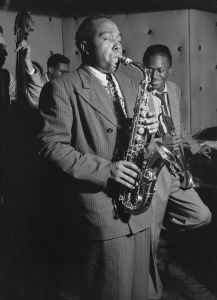Most guys train like zombies.
Mindless, soulless, and seemingly clueless members of the growing fraternity of weight training undead.
On the one hand they’re “there.” As in present. In the gym, in expensive shorts and trendy minimalist shoes. They’ve foam rolled (oh yes, they’ve foam rolled), done 20 minutes of “activation work,” and their Master Blaster play list has been cued up on the iPhone. And yes, most even have a “program.”
Then the plague hits. The zombie virus that infects otherwise healthy, virile men and turns them into one of the legions of weight lifting undead.
With apologies to Woody Allen, 80% of success in the gym isn’t just showing up.
To get results out of the experience you need to be engaged. You need to be on.
You have to get in touch with how your body feels. And responds. Learn the difference between discomfort and actual pain, and the elusive but crucial “result producing pain.”
And you have to be wise to when that switch goes off. The one where everything sort of falls into place and the weights suddenly feel lighter. Your legs less heavy, lungs less labored. Your beat up just body moves better. You feel better.
At that moment, you ARE better.
Back in my “day,” guys just seemed to get that. Training was more organic, and everyone seemed to go for it more. Cause we were, well, dumb. At the very least, ignorant.
You lifted weights to build muscle and get strong. Mobility was the shit you needed to move from the flat bench to the incline. And your “rate of perceived exertion” was typically a sliding scale between being a pussy and breaking the weights.
Sure you had a program, somewhere. But 9 times out of 10 you played Peyton Manning and called Omaha.
That big dude is doing heavy rows? Hey let’s do those today. You got 8 reps? Screw you I’ll do 10.
It was stupid and shortsighted and every guy I trained with has paid some price for it. Everyone has at least one messed up shoulder – that’s kind of a given – followed by two or three of the neck/lower back/knee/elbow injuries. More than a few have quit training altogether.
But as a few colleagues of mine in similar positions have pointed out, average guys — everyday dudes throwing the weights around — were just better 20 years ago.
Even though they had way less (good) information and far fewer resources, dudes were bigger and stronger. They also had more fun in the gym, and were way less afraid. They went for it and decided if it worked later.
Impulsive, shortsighted, and borderline reckless. But with balls. Guys were more like…. Guys.
You can’t put the genie back in the bottle. And you can’t take a smart adult whose spent thousands of hours reading cold, calculating strength training theory online and say,
“Here’s an espresso and bag of chalk, Toby, now go break the weights.”
But you can steal a few things:
• Ditch your phone. Every time you look at your phone you disconnect your brain from the training experience. For the love of God, you are not that important.
Similarly, don’t feel compelled to film everything. I know everyone is a fitness star and is building their brand, but I say save a little of yourself for yourself. At a certain point you should be working so hard that your facial expressions resemble Yoda passing a kidney stone. And no one wants to see that on his or her phone on the way to work.
• Lose yourself. I wish I could explain how it feels when that internal mediator we all have kicks the workday stress out of the room and gets your body and your brain on the same page.
Your workout becomes less a “thing you gotta do” and more a journey of self-improvement. Some liken it to an out of body experience, yet within your body. I just look at some of the Tweets I make in the hours following a workout and can tell that I’ve been off tripping somewhere.
• Get Help. You may be smart and have more training pages bookmarked in Safari then you have selfies on Instagram, but you’re still learning. I have been doing this a long time and have yet to meet a successful lifter or coach who does his or her own programming exclusively.
It’s not just a profound display of a well-managed ego. This step relinquishes control, freeing you from the left-brain constraints of the programming plumbing so that you may focus on the more intangible aspects of the training experience.
And yeah, I can help you there.
• Call an audible. This is a tricky one. Everyone should spend months, even years under strict supervision of someone experienced and educated. Do whatever they say. Follow their program. Don’t ask why as the answer will eventually reveal itself to you anyway.
But then, learn to break the rules. Ditch an exercise when it doesn’t feel right. Do more of something and less of another. Take extended rests. Or smash yourself into the ground if you think it’s what you need.
In that way training is beautifully improvisational, similar to something I like as much as horror movies — jazz.
So my parting words of wisdom is perhaps that we should all strive to approach training the way the great jazz legend Charlie Parker approached his craft:
“Learn the changes. And then forget them.”


